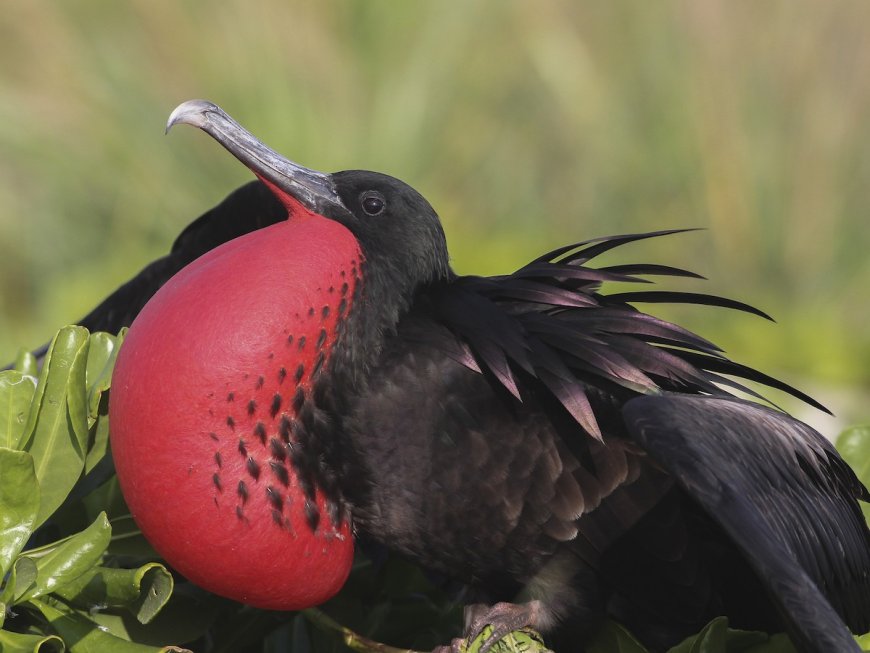All About Frigatebirds Habitat and Food

The frigatebird is a remarkable seabird known for its large wingspan, incredible flight skills, and the striking red throat pouch found in males. These birds are primarily found in tropical and subtropical regions, soaring over warm ocean waters. They prefer nesting in remote coastal areas and islands, with notable populations in the Galápagos Islands, the Caribbean, South America, West Africa, and parts of the Pacific and Indian Oceans. Their nesting sites are often located in mangroves or rocky cliffs, where they can safely raise their young away from predators.
Frigatebirds have a fascinating feeding strategy, as they primarily consume fish, squid, and other small marine creatures. Unlike many seabirds, they do not dive into the water due to their non-waterproof feathers. Instead, they rely on their aerial agility to snatch prey from the ocean surface. One of their most intriguing behaviors is kleptoparasitism—stealing food from other birds in mid-air. They often chase gulls, boobies, and terns, forcing them to drop their catch, which the frigatebird quickly grabs before it hits the water. This makes them highly efficient hunters despite their inability to dive.
There are five recognized species of frigatebirds, all belonging to the genus Fregata. The Magnificent Frigatebird (Fregata magnificens) is the largest and is commonly found in the Americas and the Galápagos Islands. The Great Frigatebird (Fregata minor) is widespread across the Pacific and Indian Oceans, while the Lesser Frigatebird (Fregata ariel) is a smaller species found in the same regions. Two rarer species include the Christmas Frigatebird (Fregata andrewsi), which is endemic to Christmas Island and critically endangered, and the Ascension Frigatebird (Fregata aquila), found only on Ascension Island.
Pronouncing "frigatebird" correctly can sometimes be tricky. Despite its spelling, it is pronounced "Frig-it-bird" (/ˈfrɪɡətˌbɜrd/), similar to the naval warship it was named after. This name was given due to the bird’s resemblance to fast-moving sailing ships.
The frigatebird remains one of the most fascinating seabirds, admired for its mastery of flight, unique feeding habits, and impressive adaptations. Whether soaring over the open ocean or engaging in aerial food theft, this bird continues to capture the attention of birdwatchers and nature enthusiasts worldwide.





